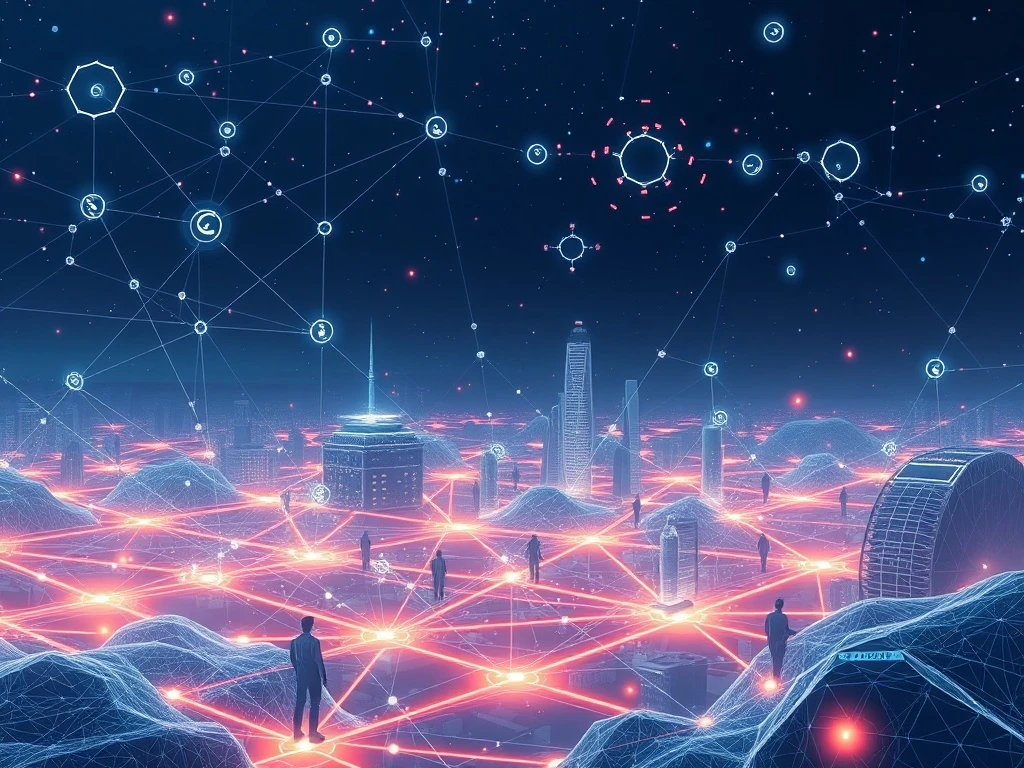Web 3 Revolution: How Blockchain and dApps Are Transforming the Digital World

Imagine an internet where you own your data, transactions are transparent, and intermediaries are a thing of the past. Welcome to Web 3, the next evolution of the digital world, driven by blockchain and decentralized applications (dApps). This revolutionary shift is reshaping industries, empowering users, and redefining trust in the digital age.
What Is Web 3 and Why Does It Matter?
Web 3 represents a decentralized internet model that prioritizes user control, transparency, and trustless interactions. Unlike Web 2, where tech giants dominate, Web 3 leverages blockchain technology to create a more equitable digital ecosystem. Here’s why it matters:
- User Ownership: Web 3 returns data control to users, eliminating centralized gatekeepers.
- Transparency: Blockchain ensures immutable and verifiable transactions.
- Trustless Interactions: Smart contracts automate agreements without intermediaries.
How Blockchain Powers Web 3
Blockchain is the backbone of Web 3, providing a secure and decentralized framework for dApps and smart contracts. Key features include:
| Feature | Benefit |
|---|---|
| Decentralization | No single point of failure or control |
| Immutability | Tamper-proof transaction records |
| Smart Contracts | Automated, trustless agreements |
The Rise of dApps in Web 3
Decentralized applications (dApps) are the building blocks of Web 3, offering services without centralized oversight. Popular examples include:
- DeFi Platforms: Uniswap, Aave, and Compound enable peer-to-peer lending and trading.
- NFT Marketplaces: OpenSea and Rarible allow users to buy, sell, and own digital assets.
- Social Media: Platforms like Minds reward creators directly.
Web 3 vs. Web 2: A Paradigm Shift
The differences between Web 3 and Web 2 are stark:
- Data Control: Web 2 centralizes data; Web 3 decentralizes it.
- Monetization: Web 2 relies on ads; Web 3 empowers users to monetize directly.
- Privacy: Web 3 offers decentralized identity solutions for greater control.
Challenges and the Road Ahead
Despite its potential, Web 3 faces hurdles:
- Scalability: Blockchain networks must handle higher transaction volumes.
- Usability: dApps need to become more user-friendly.
- Regulation: Clear guidelines are needed for widespread adoption.
How to Navigate the Web 3 Ecosystem
For those exploring Web 3, here’s a roadmap:
- Learn blockchain fundamentals.
- Experiment with dApps.
- Stay updated with reputable sources.
- Use AI tools for data-driven insights.
Conclusion: The Future Is Decentralized
Web 3 is not just a technological upgrade; it’s a movement toward a more open, transparent, and user-centric internet. While challenges remain, the potential for innovation is limitless. Are you ready to be part of the revolution?
Frequently Asked Questions (FAQs)
- What is Web 3?
Web 3 is a decentralized internet model powered by blockchain and dApps, emphasizing user control and transparency. - How does Web 3 differ from Web 2?
Web 2 is centralized and controlled by tech giants, while Web 3 decentralizes data and empowers users. - What are dApps?
Decentralized applications (dApps) run on blockchain networks, offering services without intermediaries. - What challenges does Web 3 face?
Scalability, usability, and regulatory uncertainty are key hurdles. - How can I get started with Web 3?
Begin by learning blockchain basics, exploring dApps, and staying informed.







